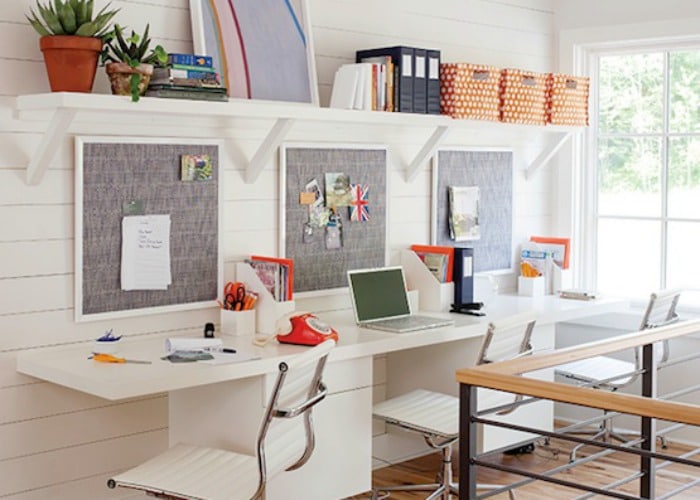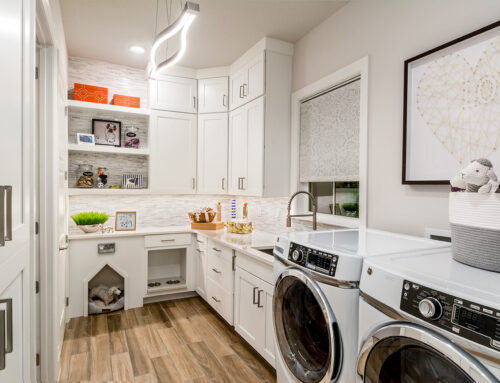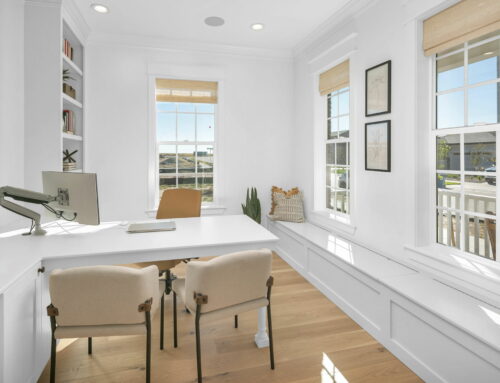The landscape of education has undergone a remarkable transformation, and one of the most notable shifts has been the rise of home-based learning for children. With advancements in technology and changes in educational paradigms, more families are opting for flexible, personalized learning experiences right from the comfort of their homes – not only for homeschooling but dedicated homework spaces, too!
This trend has not only altered the way children learn but has also spurred innovative approaches to home design. In this blog post, we will explore the evolving trends in how children study at home, including multitasking habits, technology niches, bedroom desks, and kitchen island homework sessions. Additionally, we’ll delve into how new homebuilders can seamlessly incorporate these trends into their designs, creating spaces that cater to the modern educational experience.
Multitasking Habits: Balancing Learning and Leisure
Today’s children are growing up in a digital age, where multitasking has become second nature. It’s not uncommon to find them toggling between textbooks, online resources, and digital devices while engaging in virtual discussions with classmates. To accommodate these multitasking habits, home study spaces should be designed with flexibility in mind. Consider creating multifunctional areas that seamlessly integrate technology, allowing children to switch between focused learning and leisure activities effortlessly. Adjustable lighting, comfortable seating, and well-organized storage solutions can contribute to an environment that fosters both concentration and relaxation.
Technology Niches: The Hub of Digital Learning
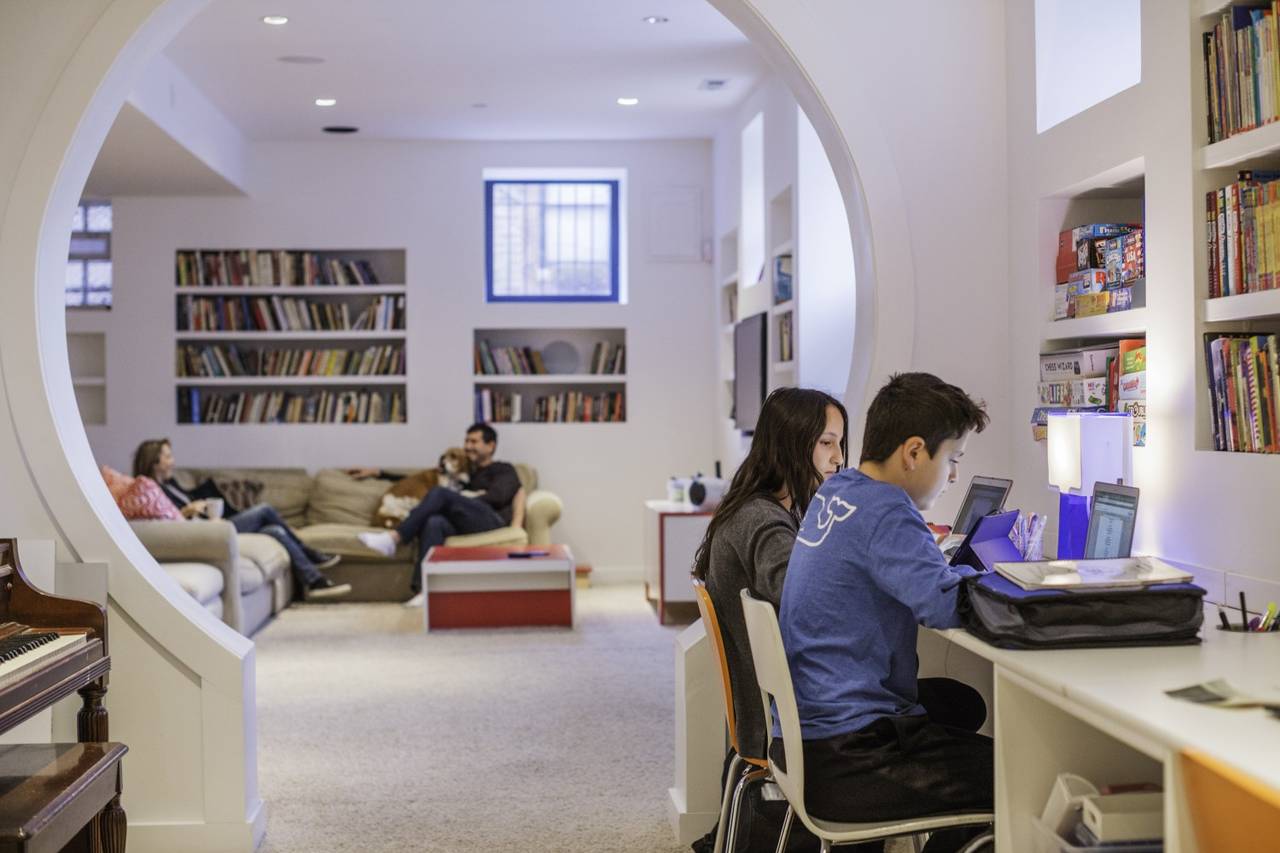
Photo: Wall Street Journal
Technology has become an integral part of education, enabling children to access a wealth of information and interactive tools. Designing dedicated technology niches within a home can help children immerse themselves in digital learning while minimizing distractions. These niches could include built-in charging stations, cable management systems, and ergonomic setups to support extended device usage. Integrating smart home features such as voice-activated assistants and interactive whiteboards can further enhance the learning experience, making the home a hub for digital exploration and collaboration.
Bedroom Desks: A Personalized Learning Sanctuary
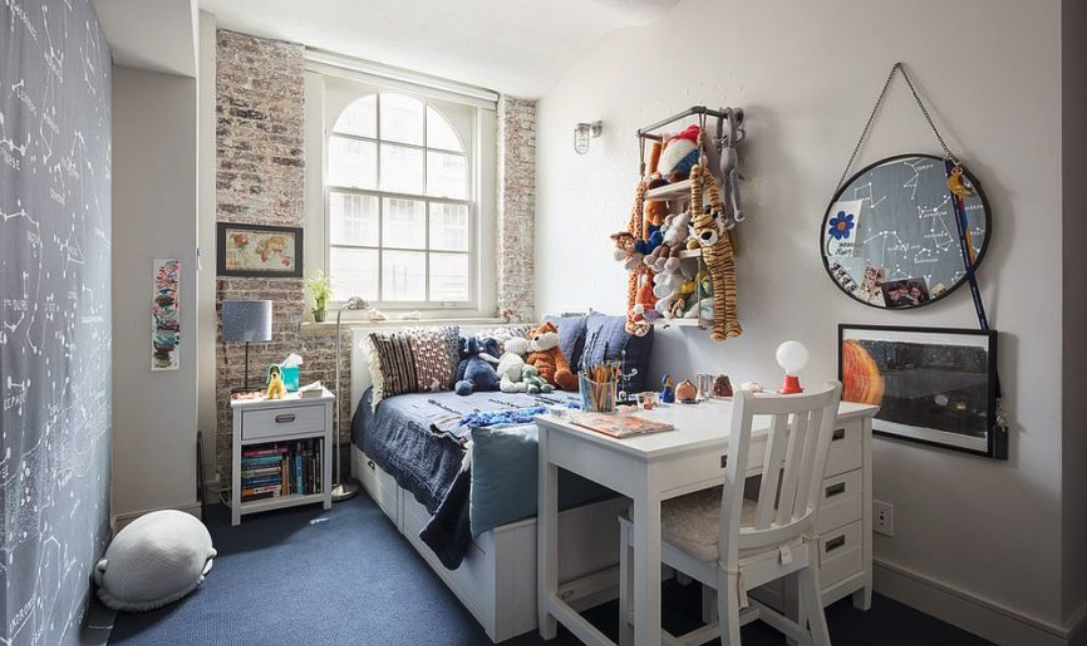
Photo: Decoist
Many children find solace in studying within the confines of their own bedrooms. A bedroom desk can serve as a personalized learning sanctuary, where children can retreat for focused study sessions. When incorporating a desk into bedroom design, it’s crucial to prioritize ergonomic comfort, adequate storage, and proper lighting (be sure to add a task light so they don’t damage their eyes). To minimize distractions, consider soundproofing elements or noise-canceling features, ensuring an optimal environment for concentration and creativity.
Kitchen Island Homework Sessions: Fostering Family Engagement
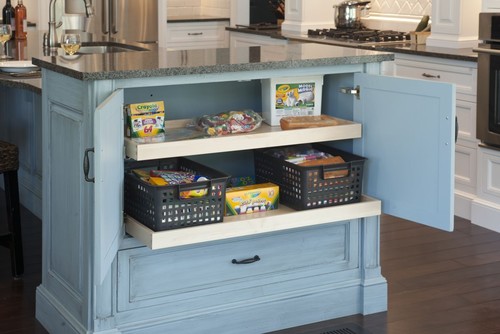
Photo: Kitchen Magic
The kitchen island has evolved from being solely a culinary workspace to a versatile hub for various family activities, including homework sessions. As children work on assignments at the kitchen island, parents can provide guidance, support, and foster an atmosphere of shared learning. New homebuilders can design open-concept kitchens with integrated seating around the island, making it easy for parents to oversee their children’s progress while preparing meals. Incorporating ample storage for study materials and creating a clutter-free environment can contribute to a seamless transition between cooking, dining, and learning.
Incorporating Trends into New Home Construction
Designing homes that cater to these evolving study habits requires a thoughtful and innovative approach. New homebuilders can consider the following strategies:
- Flexible Layouts: Design spaces that can easily adapt to changing needs, incorporating modular furniture and storage solutions for multifunctional use.
- Integrated Technology: Plan for hidden wiring and outlets to accommodate various devices, ensuring seamless connectivity throughout the home.
- Ergonomic Design: Prioritize ergonomic furniture and lighting to create comfortable study environments that promote focus and well-being.
- Zoned Spaces: Incorporate designated areas for technology use, bedroom desks, and kitchen island activities, maintaining a balance between focused learning and family engagement.
- Smart Home Features: Integrate smart home technologies that enhance the learning experience and offer efficient control of lighting, temperature, and audiovisual components.
As the way children study at home continues to evolve, so too should the design of modern homes. Multitasking habits, technology niches, bedroom desks, and kitchen island homework sessions are integral components of the contemporary educational experience. By understanding and incorporating these trends into new home construction, builders can create spaces that empower children to learn, explore, and thrive in the digital age while fostering a sense of connection and collaboration within the family unit. As the educational landscape continues to transform, the home will remain a cornerstone of learning and growth for generations to come.
Contact us to learn more about our design and installation process. We engage in the creation, curation, analysis, and collaborative efforts with builders and architects, all aimed at crafting model homes and amenities that inspire visions of homeownership. Our mission is to distinguish our client’s product from the competition and facilitate the sale of homes.

